The fields of computational linguistic and AI are growing, which means language apps are improving by leaps and bounds. I love languages and I study them just for fun; over the years I’ve tried Spanish, French, German, Ukrainian, and Polish.
My latest obsession is Russian. I never dreamt I’d be able to read another alphabet, and I couldn’t have accomplished it without the help of language learning and translation apps, most of which are free to use or at least very affordable.
But how do you know if the translation or lesson you are receiving is accurate? Well, I’ve tried each and every one of the most common language apps (and a few lesser known ones) and I can tell you honestly which ones are amazing, good enough, or mediocre.
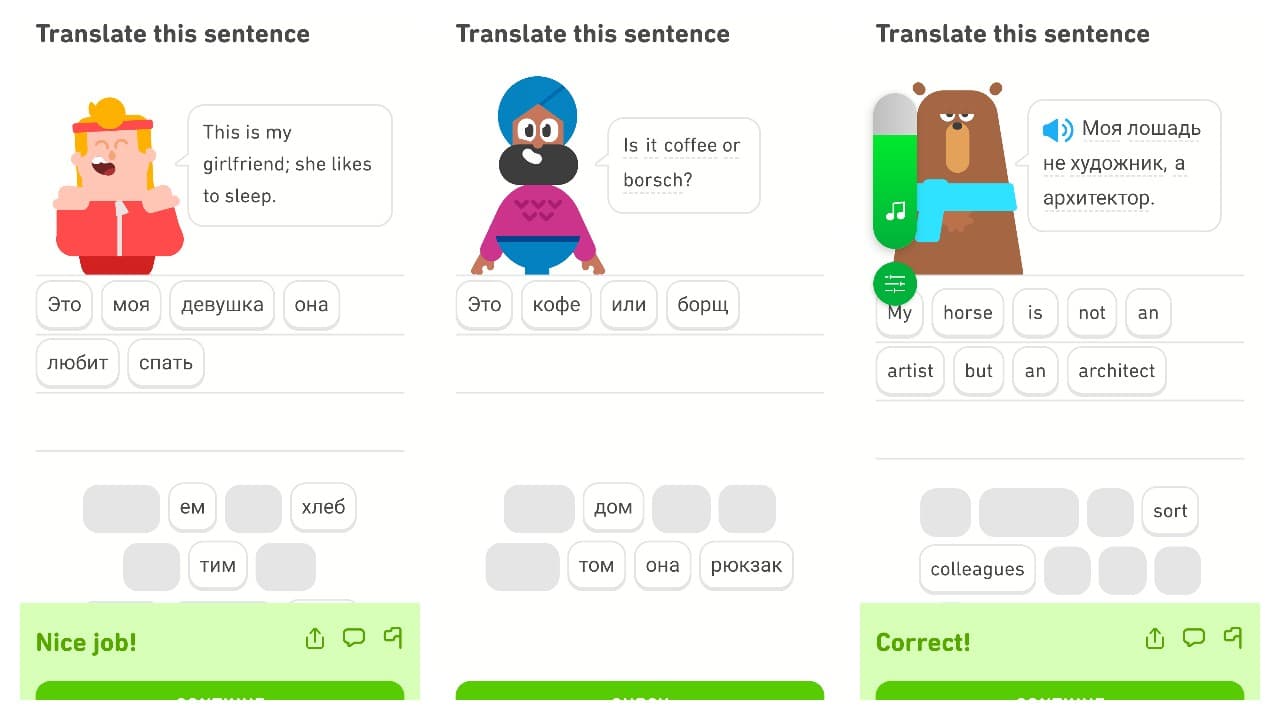
DuoLingo
The most popular language-learning app on the planet, DuoLingo is known for its gamified, free content. Besides having the most extensive library of languages, they also offer a few endangered (Navajo, Hawaiian), fantasty (Klingon, High Valyrian), and obscure (Esperanto) languages.
I have DuoLingo to thank for my success in the Russian language. In a matter of 9 months of study I managed to get pretty far, although with many useless sentences such as “My horse is not an artist, but an architect.”
The only downside: sometimes the translations are weird to native speakers—not exactly wrong, but not what they expected, such as a formal word that is falling out of usage or an unusual word order.
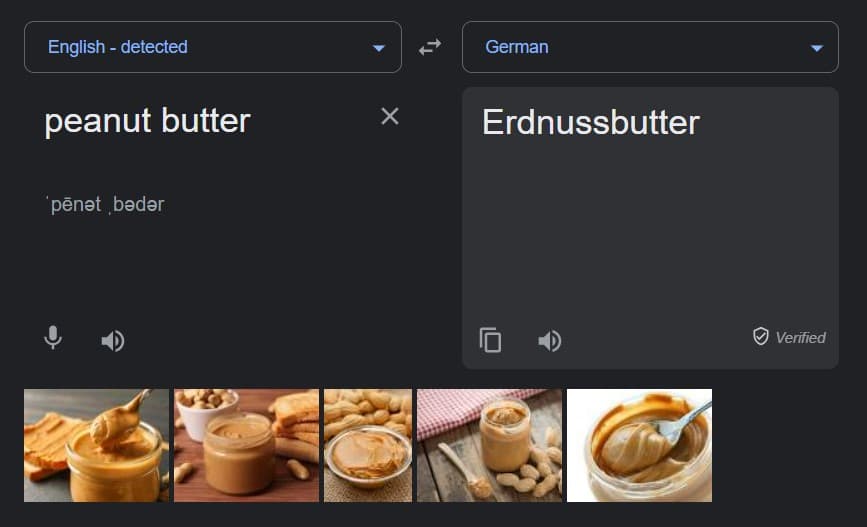
Google Translate App
Everyone knows the web version of Google translate—it appears as the top result in Google whenever you search “How do you say word in language.” Click on Open in Google Translate to view more definitions and forms of the word, plus translate documents and websites.
Better still, is the Google translate app. It has a conversation function allows you to translate in real time using AI to perceive the language being spoken. Although pretty amazing, it’s not perfect yet. Google’s detection tool can get a little dyslexic and will pick up the sounds I make, matching them to similar sounding words in the wrong language.
The translations are verified by users, and similar to Wikipedia, anyone can contribute. I’m not fluent, but I just verified a few English to Russian translations, and now I’m having imposter syndrome.
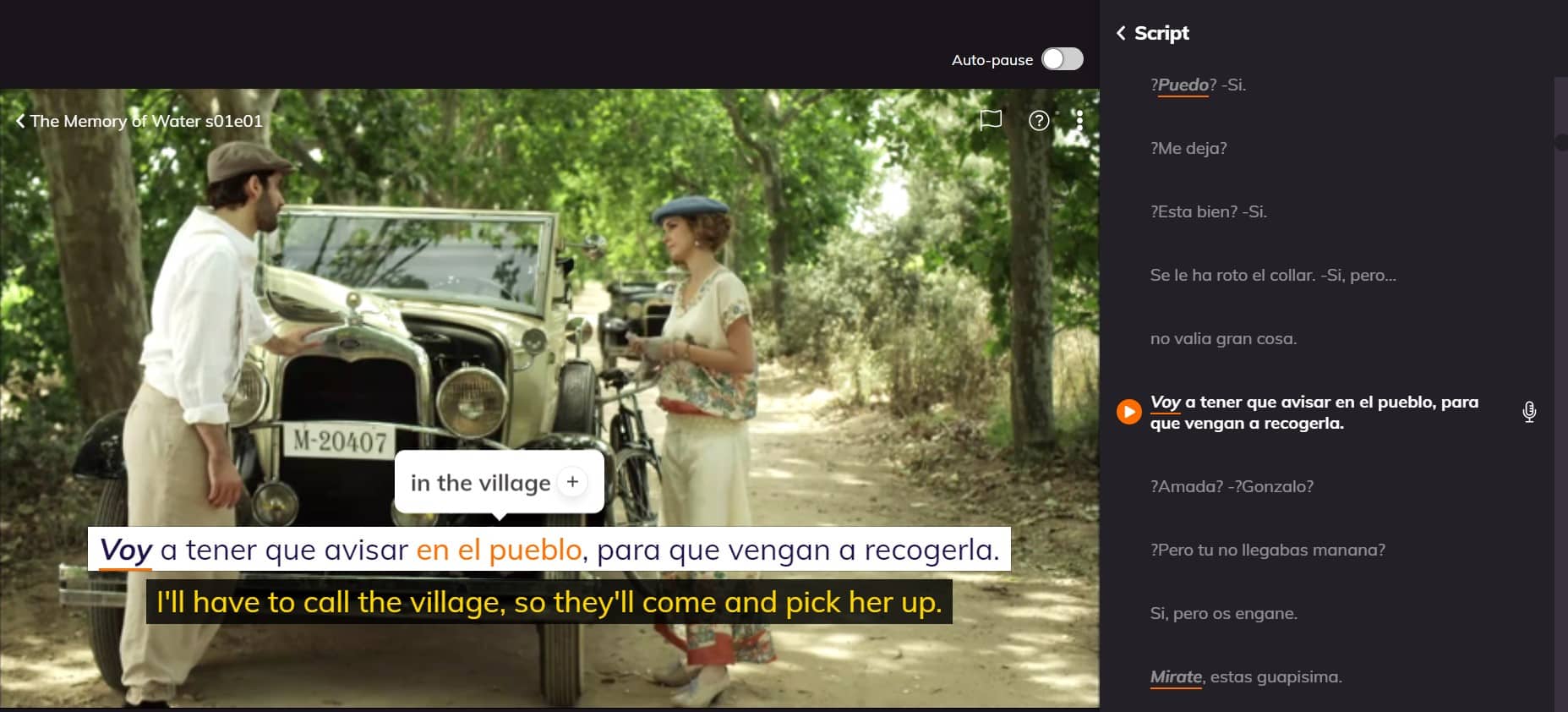
Lingopie
You know how they say one of best ways to learn a language is by watching movies? Well, I’ve tried it both ways—Russian with subtitles in English, and English overdubs with subtitles in Russian. But I really need to see both sets of subtitles to learn new words.
Lingopie is exactly the product I was looking for! Imagine Netflix with dual, interactive subtitles—click on any word or phrase for a pop up definition and pronounciation (this auto-pauses the show).
In the right sidebar on desktop, you’ll see a running list of the subtitles so you can return to them for practice or add them to your dictionary. As a learner of a language in a different alphabet, I was impressed by they included the transliteration from Cyrillic to Roman to make pronunciation easier.

Memrise
Say it three times fast! Lessons on Memrise have more of a human touch with short video clips of native speakers reciting sounds, words, and phrases. On the mobile app, you can hear the audio only, no video. Beneath the video are additional audio recordings of other native speakers, since no two people sound the same.
Lessons are broken up into “scenarious,” and can be tailored by selecting “I already know this” or “Teach me this.” The voice recordings are the most authentic and high-quality I have heard so far. And they have a decent amount of free content in each section.
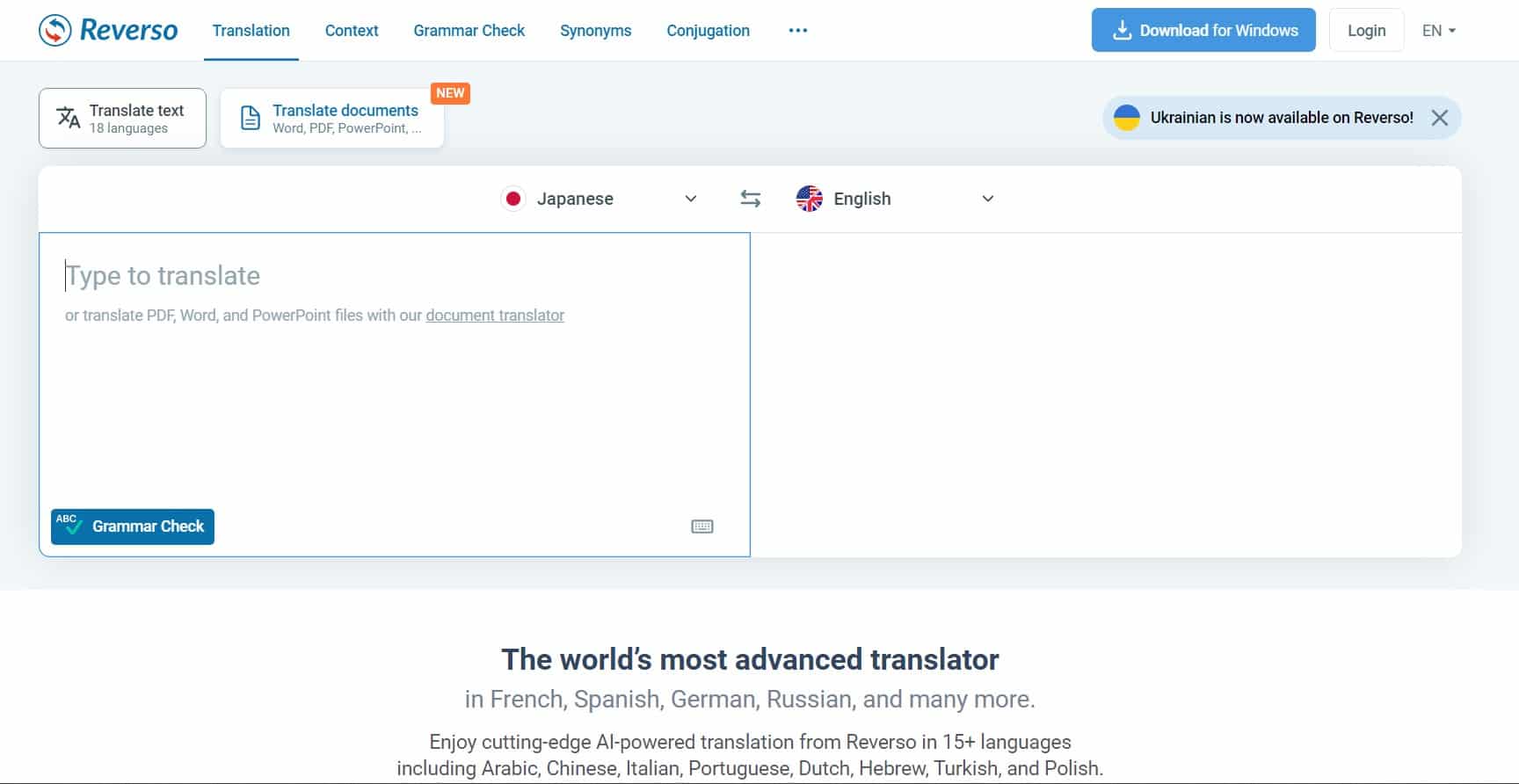
Reverso
It sources it’s translations from multilingual texts such as government documents and movie subtitles, and provides those examples of context beneath the translation so you can see how the words function together in usage. It even has a conjugation tab where you can enter a verb (in any form) and it will show you all of the tenses. This function is available in 10 languages only.
Overall, Reverso translates 18 languages, whereas Google claims 133, but I find the quality of Reverso way better. How do I know? Well, I popped a few English phrases into both Google translate and Reverso to compare, and after asking a few Russian-speaking friends, Reverso’s translations to be more accurate and the pronunciation more authentic. They also recently added Ukrainian which they’ve done a good job with.
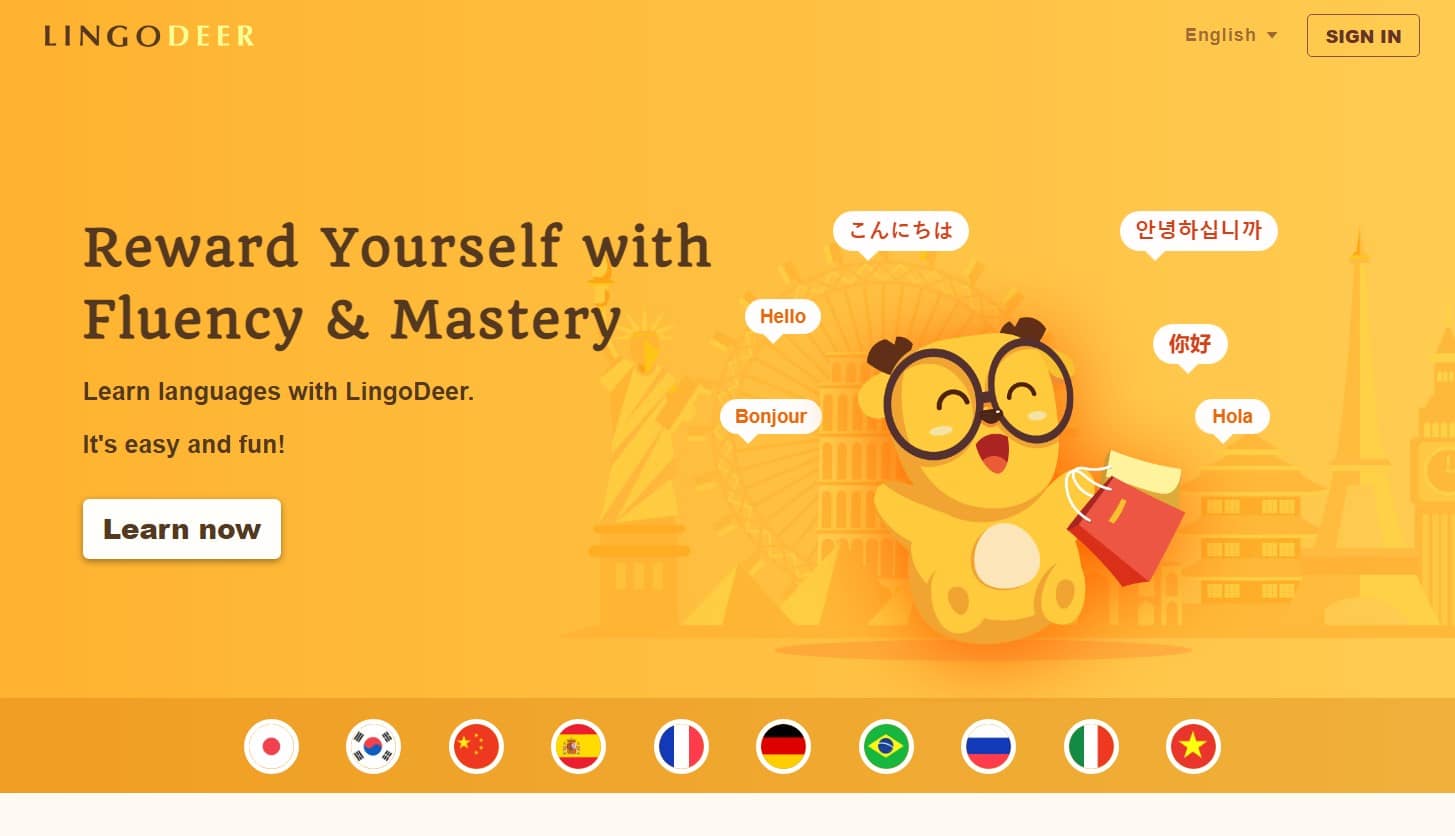
LingoDeer
If learning languages stresses you out, I recommend Lingo Deer. It comes with a very chill vibe. Your mascot is a deer and you are being guided through a walking path of exercises with cute drawings and animations. The sound effects you hear when you get it right or wrong are non-invasive and the teaching voice sounds like a happy, carefree child.
An innovative feature is the voice recording which actually captures your voice and plays it back, so you can compare your pronounciation with the teaching voice.
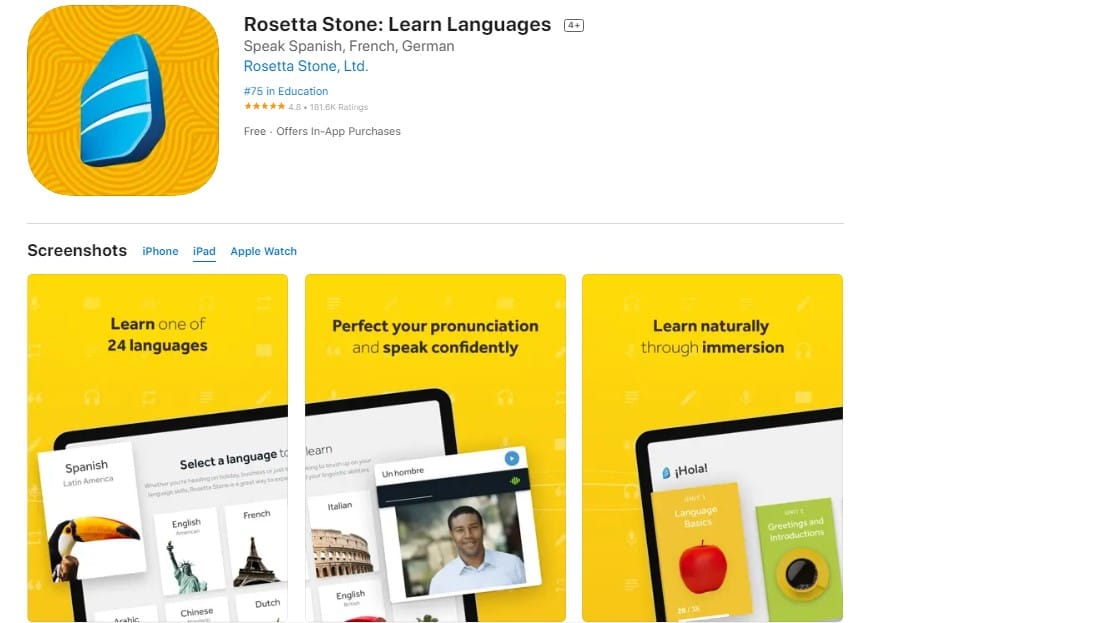
Rosetta Stone
Considered the gold standard of language learning, Rosetta Stone it is how I developed a pretty decent vocabulary of German phrases. Although it has no explicit grammar instruction, it is as close as you can come to true immersion with exercises for listening, speaking, and matching pictures with words.
It is a static product which means the content never changes, but they have created live webinars for specific topics like “German idioms.” Remember when everyone was stuck in the house and bored during 2020? Well, the owners of Rosetta Stone saw it as an opportunity and they practically gave away the product with a lifetime/all languages subscription for $199 as a pandemic special. It is definitely best two hundred bucks I’ve ever spent in my life, and even $20 cheaper now.
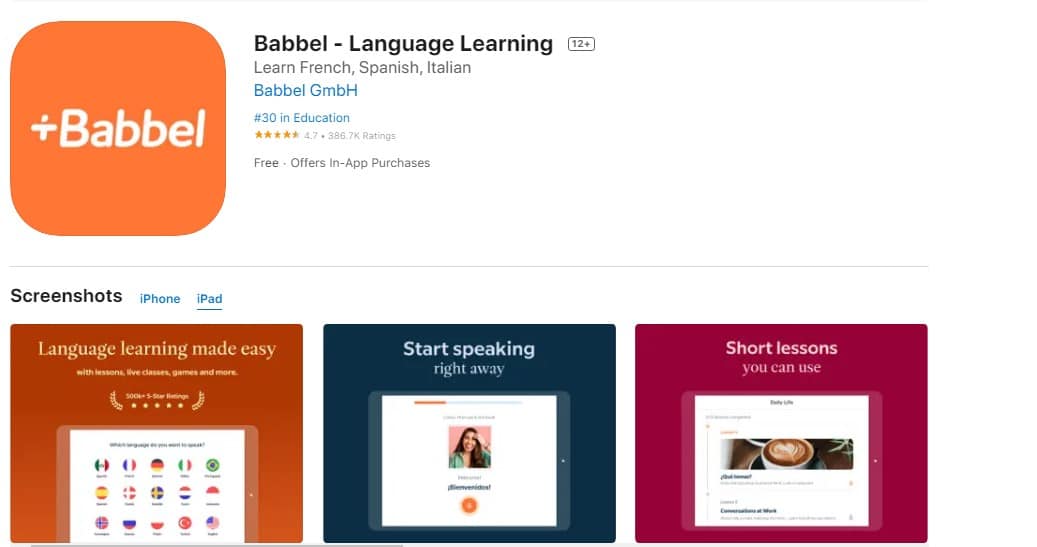
Babbel
Cleverly named after the Tower of Babel origin myth about how multiple languages came in to existence, the Babbel app contains lessons in 14 languages. I’ve noticed they break words in phonemes, a groups of sounds, which is not something I see a lot on language apps.
Less gamified than DuoLingo, Babbel has a sleek and sophisticated interface. It is meant to feel like you are turning the pages of a virtual textbook with exercises and flash cards. The prompts act as a self-aware virtual teacher holding your hand with pop-ups like, “Did you notice? These words use the letters that you’ve already seen!”

Mango Languages
Mango wins for most outstanding feature! You are presented with an audio recording and waveform from a Native speaker, you hold down the microphone icon, record your audio, and then line the waveform up with the original and play them back simultaneously to see and hear the areas where your pronounciation needs improvement.
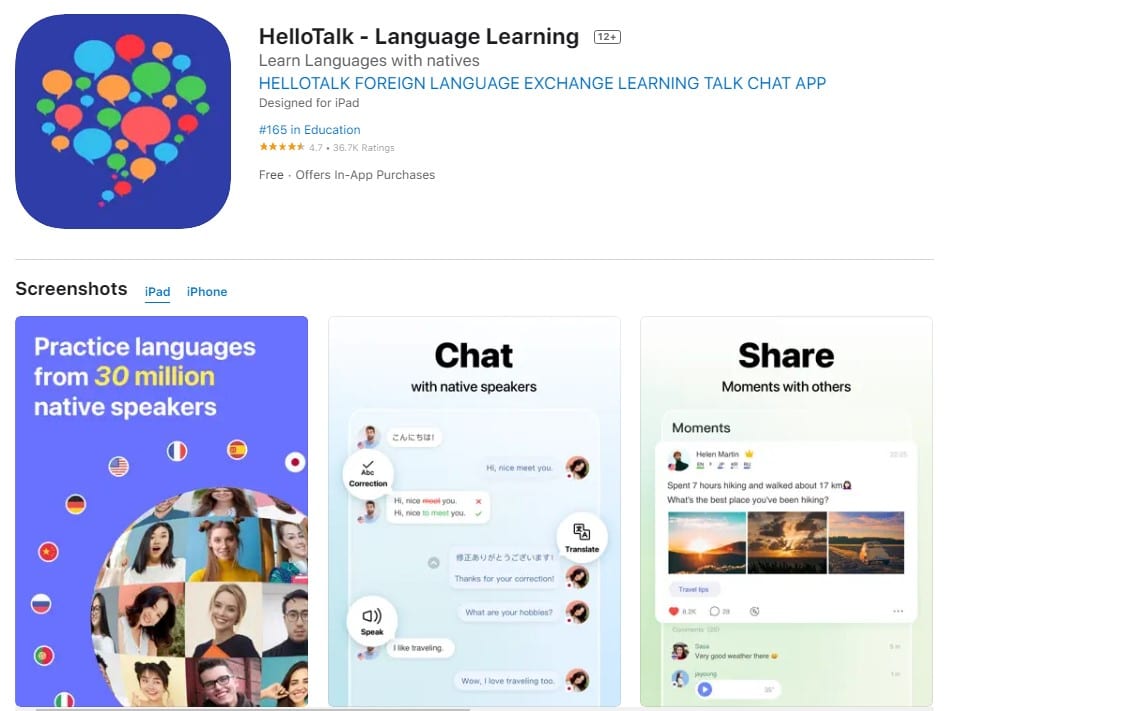
HelloTalk
A social media app disguised as a language learning app, HelloTalk is going to eat up a lot of my time. The platform is focused on developing a profile, following between users, and communicating in real time. It has a feeds similar to Facebook sorted by All, Learn, Nearby, Following, and Help Others.
The Live tab has video events and audio rooms hosted by members to practice conversational skills or contribute comments to discuss issues of vocabulary, grammar, pronounciation or any topic related to language. I’m very impressed with the app for being uniquely interactive.
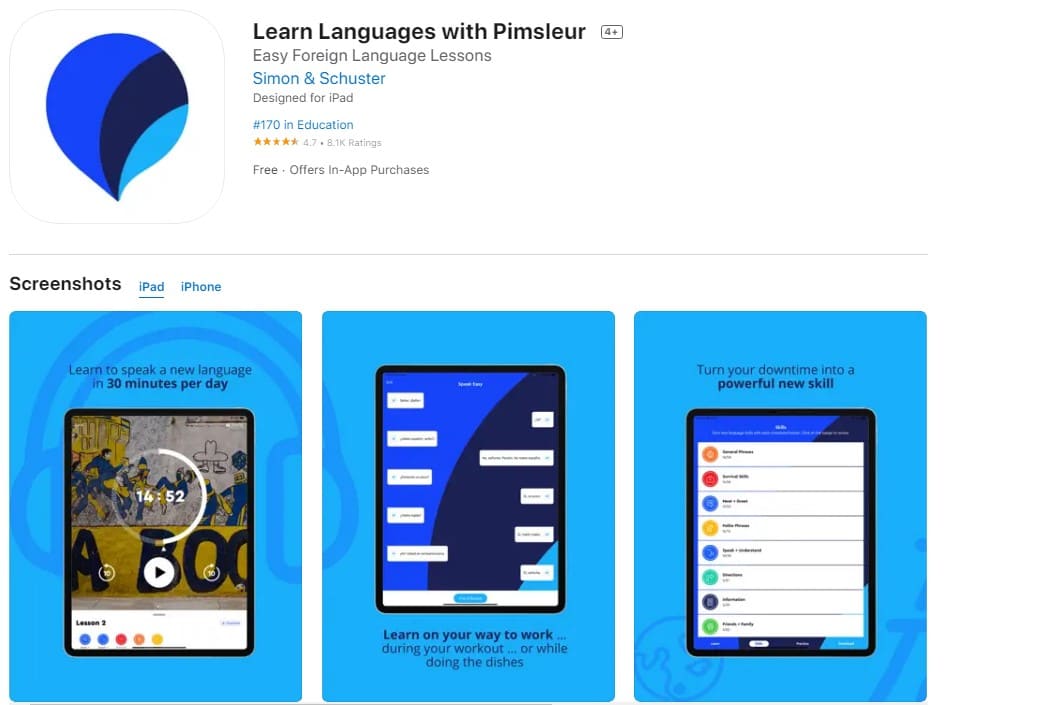
Pimsleur
I tried Pimleur for French years ago when it was a set of CDs! I remember listening to lessons on the subway and picking up enough French phrases to get me through my travels. It’s been a while, so I signed up for the one free lesson they offer on their website. I chose Ukrainian.
I listened on my headphones while I was cleaning up the apartment—no screen, hands-free—and after 30 minutes I can confidently say “Excuse me. Do you speak English? I speak a little Ukrainian. I am American.” Each word was broken down into syllables to repeat again and again. I know half an hour sounds like a long time for 4 sentences, but I woke up the next morning having retained what I learned.
They don’t have a free version like the other apps do and I can see why. They claim to have you “speaking like a native in 30 days.” After my trial lesson, I’m convinced it’s good investment especially since I want to reduce my screen time.
Summary
There are many great language apps out there and deciding which one is best for you depends upon your goals and your learning style. Do you want to work alone or find a language partner? How much focus do you want to place on vocabulary, pronounciation, grammar, or culture? Do you want to feel motivated by the design and layout of the app, or are you more concerned with the quality of content?
Do you have a favorite? Let us know in the comments…

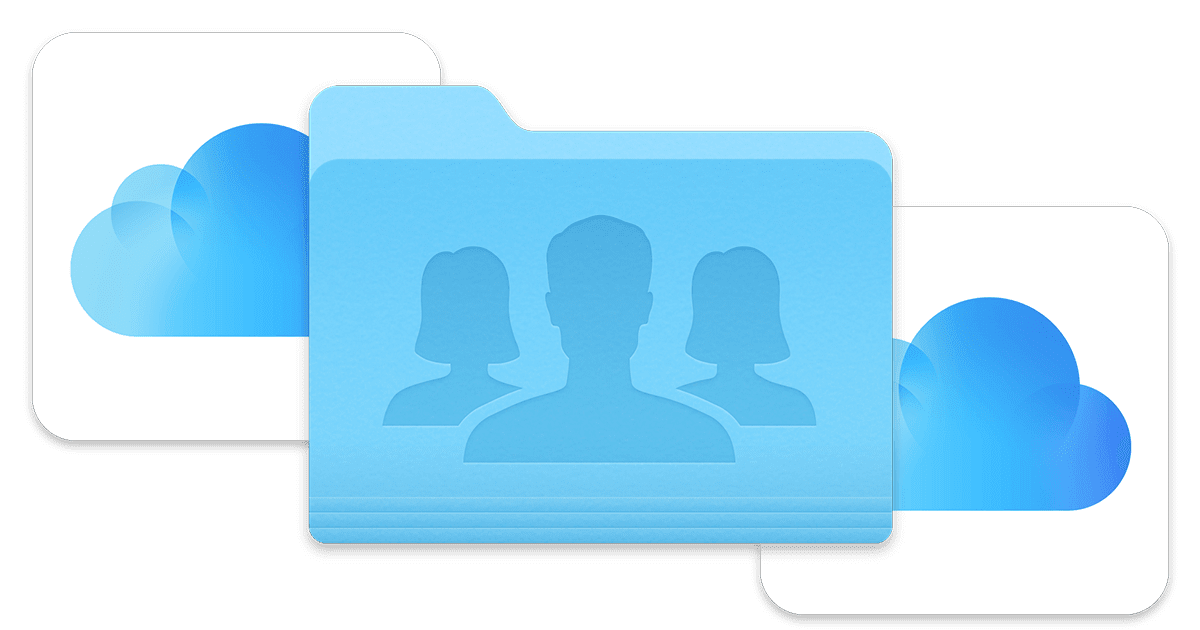






Thanks for the article. A comparison table indicating pros and cons of each application would be great. On the other hand, which applications use a natural way or learning, which means NO translation to other language? That is the best method, being the one that we have all used when learning our (first) mother language.
Here are the pros and cons for each.
And the CONS are:
DuoLingo did receive a –
“The only downside: sometimes the translations are weird to native speakers—not exactly wrong, but not what they expected,… ”
In the long run, the good of each seems to emphasize the point that maybe using more than one would be best.
Pleco is great for leaning Chinese